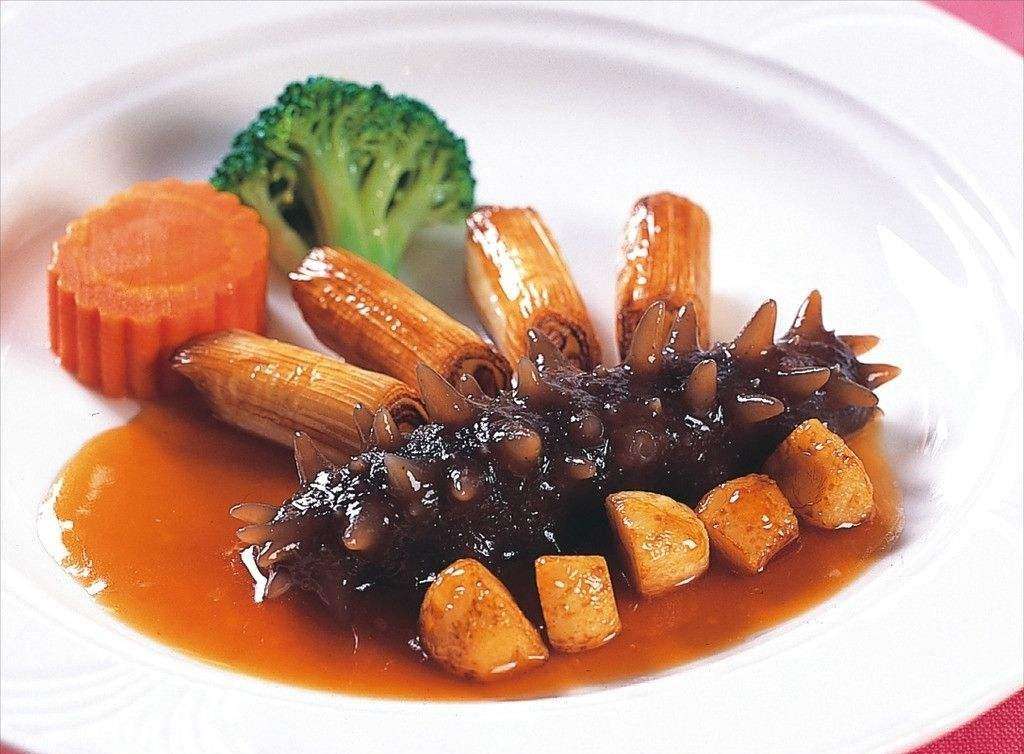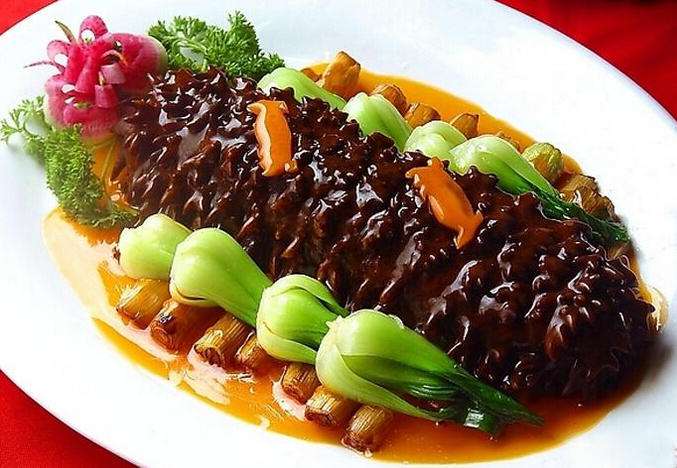In the year 1983, the master of Shandong cuisine, Wang Yijun, captured the hearts of culinary connoisseurs and garnered the championship in the hot dish category at the National Culinary Master Skills Exhibition with his creation, “Scallion Braised Sea Cucumber.” This dish not only resonated throughout the expanse of Shandong but also secured its acclaim in Beijing, Heilongjiang, and Henan, where it is revered as a classical delicacy. Today, we delve into the heritage of this renowned dish.
“Scallion Braised Sea Cucumber,” a dish that brilliantly encapsulates the fresh, oceanic essence of sea cucumber tantalizingly infused with the robust aroma of scallions, is a gastronomic treasure within the Jiaodong branch of Shandong cuisine. Jiaodong cuisine, hailing from Fushan County, blossomed into its unique culinary school upon its arrival in Qingdao—its proclivity for seafood a reflection of the bountiful coastal resources of Shandong. Its indelible bond with the local geography has sculpted it into an autonomous and distinguished culinary system, inherent to the traditional quartet of Chinese cuisines.
The photograph captures a precious moment with Mr. Wang Shizhen to the left and Mr. Wang Yijun to the right, both doyens of their culinary craft. The consumption of sea cucumber can be traced back to the era of the Three Kingdoms, where it was once referred to as “earth meat.” By the Ming Dynasty, it garnered such esteem to be listed amongst the rarefied ranks of imperial cuisine. In the bygone era of the Qing Dynasty, it was hailed as a celebrated delicacy within the capital. The dish underwent a transformative evolution at the hands of Wang Shizhen, a renowned chef from the famed Fengze Garden, who, guided by the culinary insights from the “Suiyuan Food List,” espoused a bold culinary philosophy—counterbalancing the sea cucumber’s robust nature, not with the subtlety of a clear broth but with a heady melange of concentrated flavors and hues. His protégé, Wang Yijun, heralded a new chapter for this dish in the People’s Republic, which witnessed further refinement under the stewardship of his disciple, Dong Zhenxiang, elevating the “Scallion Braised Sea Cucumber” to a delicate art form, encapsulating the dish’s evolution through the passage of time.

We also cherish the time-honored culinary heritage, as seen in the cherished photograph of the national treasure and culinary maestro Wang Yijun alongside his disciple Dong Zhenxiang, with the creation that transcends taste into the realm of ambience and aesthetic.
The sea cucumber selected for this dish is the vibrant and elastic “Spiky Sea Cucumber,” prized for its flavor and nutritional value, heralded alongside ginseng and swallows’ nests among the “Eight Culinary Treasures.” Ancient texts accord it with virtues comparable to ginseng, thus its regal nomenclature, a testament recorded in the annals of “Bencao Gangmu Shiyi,” which praises its warming and strengthening qualities. Modern medical research extols the sea cucumber’s unique bioactive compounds, particularly its content of the trace mineral vanadium, known for promoting hematopoiesis and regulating iron transport in the bloodstream, offering therapeutic benefits for conditions such as diabetes, iron-deficiency anemia, and gastric ulcers. While occasional consumption confers health advantages, moderation is key to avoid digestive woes.
A diverse array of sea cucumbers graces the culinary stage, from the Spiky to the Smooth Sea Cucumber, each with their own distinct provenance from Liaoning to Shandong, or internationally across Russia, North Korea, South Korea, the Arctic, and Japan. Notably, sea cucumbers from Liaoning are most esteemed, a revered sentiment dating back to the Ming Dynasty and underscored during President Nixon’s visit to China in 1972 when the “Liaoning Sea Cucumber” was served as a diplomatic delicacy. The comparative latitude and climatic conditions of Shandong yield a sea cucumber of equal repute.

In purchasing sea cucumbers, discerning gourmands should be wary of those that masquerade as wild-caught. True wild specimens boast burly podia, short, stout spines, and a vibrant, elastic texture. When it comes to rehydration, meticulous care and pure water are paramount, ensuring the sea cucumber swells to full splendor without dissolving into the abyss.
The culinary narrative of “Scallion Braised Sea Cucumber” is further accentuated by the choice of scallions—not just any scallion but the storied Zhangqiu leek from Shandong, esteemed since 681 B.C., its mild piquancy and subtle sweetness pairing exquisitely with the sea cucumber. The Zhangqiu leek’s lofty reputation was cemented by no less authority than Ming Emperor Shizong, who dubbed it “the king of scallions.” It is indeed intertwined with Shandong’s culinary edict of deftly wielding onions and scallions to aromatic effect.
For those adventurous souls yearning to recreate this dish within the confines of their homes, a simplified yet no less savory rendition can be achieved. The method involves gently frying scallion segments to a golden hue, followed by a symphony of oyster sauce, soy sauce, and a harmonious blend of spices introduced to the patiently rehydrated sea cucumber, culminating in a dish that, while not strictly orthodox, remains a delight for the palate. Should there be other secret variances to this culinary hymn, they are most welcomed to be shared and savored.

